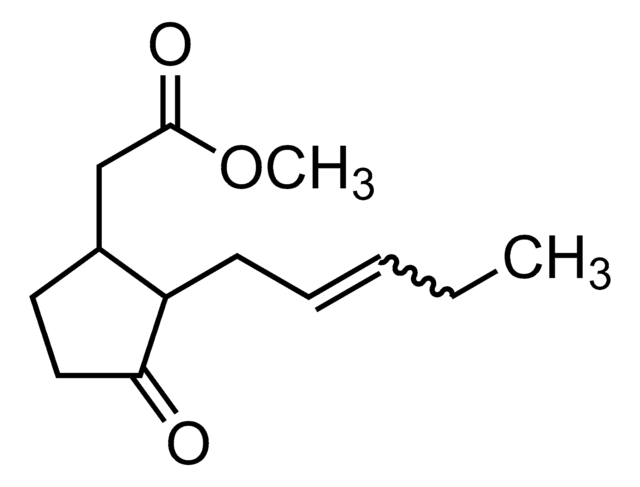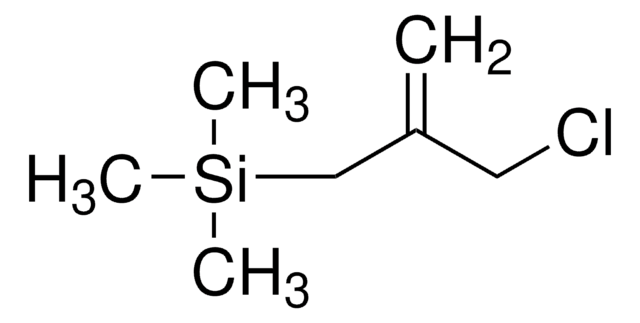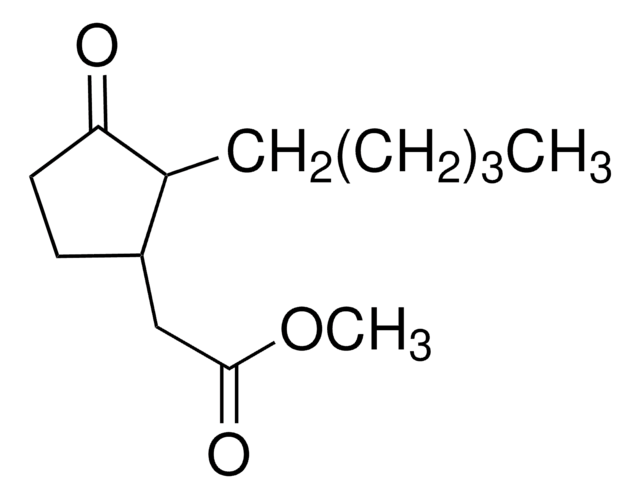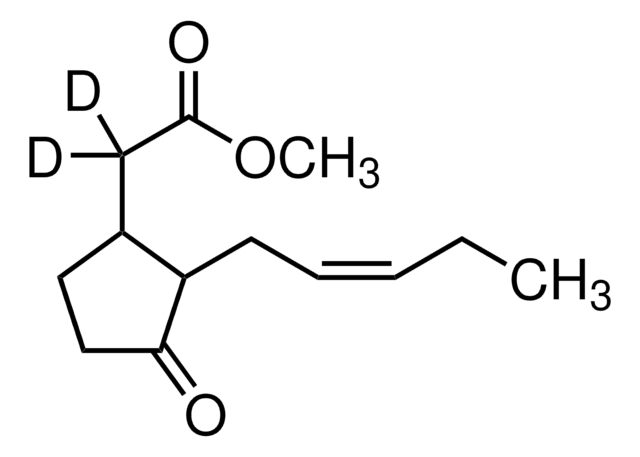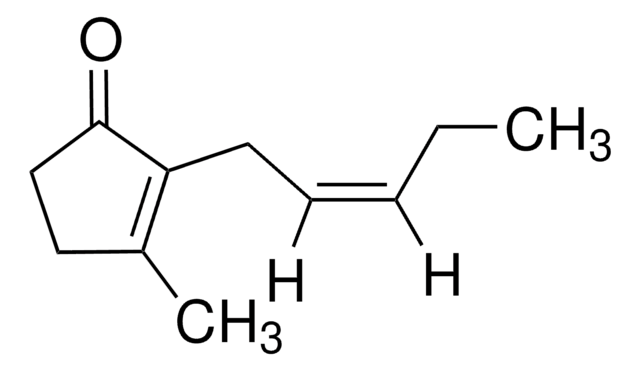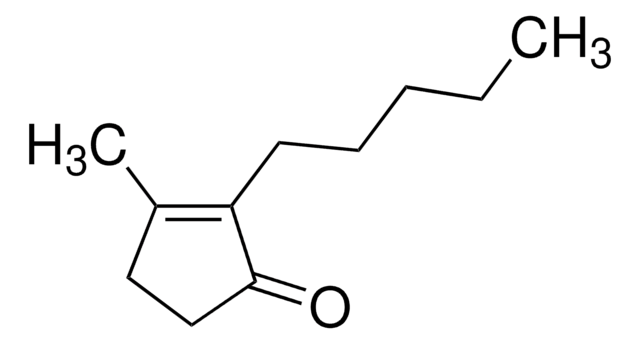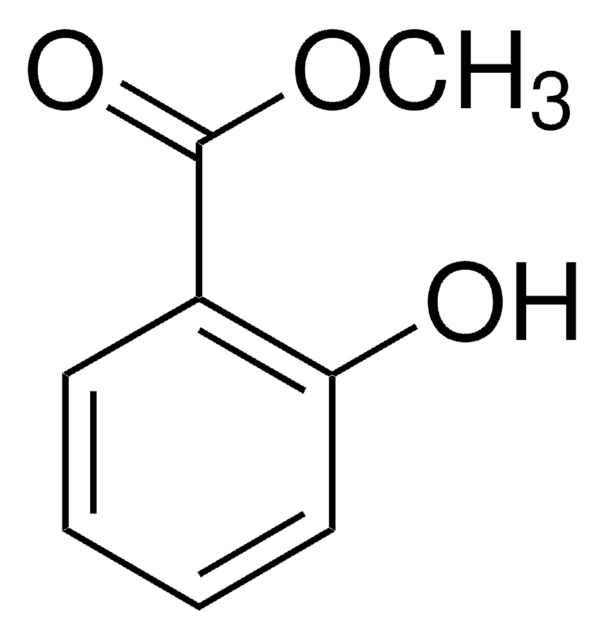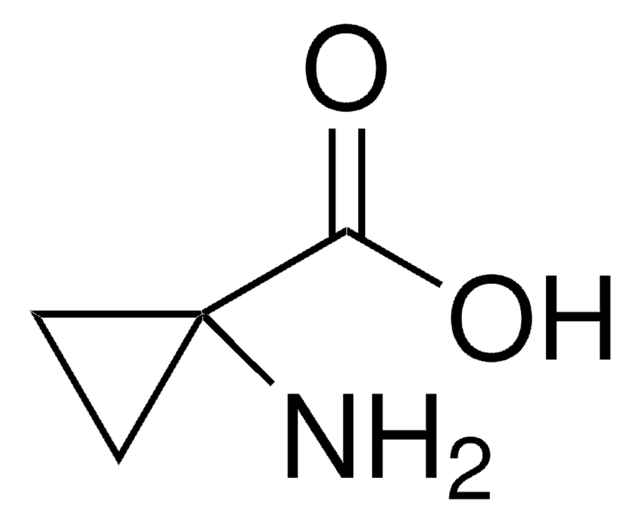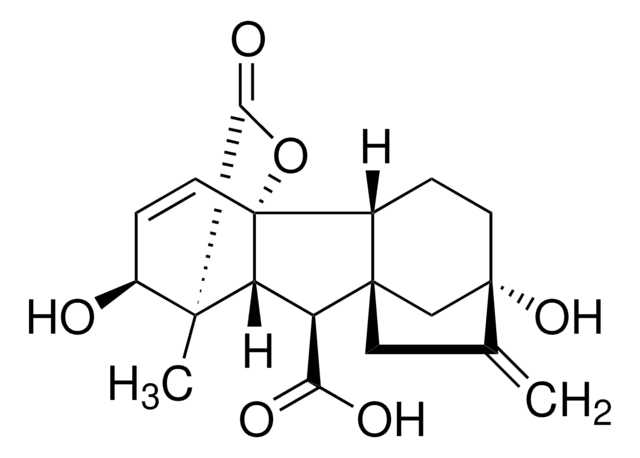392707
Methyl jasmonate
95%
Synonyme(s) :
3-Oxo-2-(2-pentenyl)cyclopentaneacetic acid, methyl ester, Methyl 3-oxo-2-(2-pentenyl)cyclopentaneacetate
About This Item
Produits recommandés
Niveau de qualité
Pureté
95%
Forme
liquid
Contient
Synthetic α-tocopherol as stabilizer
Indice de réfraction
n20/D 1.474 (lit.)
Point d'ébullition
110 °C/0.2 mmHg (lit.)
Solubilité
water: soluble 340 mg/L at 25 °C(lit.)
Densité
1.03 g/mL at 25 °C (lit.)
Groupe fonctionnel
ester
ketone
Chaîne SMILES
CC\C=C\CC1C(CCC1=O)CC(=O)OC
InChI
1S/C13H20O3/c1-3-4-5-6-11-10(7-8-12(11)14)9-13(15)16-2/h4-5,10-11H,3,6-9H2,1-2H3/b5-4+
Clé InChI
GEWDNTWNSAZUDX-SNAWJCMRSA-N
Vous recherchez des produits similaires ? Visite Guide de comparaison des produits
Catégories apparentées
Description générale
Application
Methyl jasmonate may be used in the following studies:
- As a potential anti-cancer agent that shows selective cytotoxic effect towards cancer cells.
- To induce the defensive proteinase inhibitor proteins synthesis in plant leaves.
- As an elicitor to enrich the total anthocyanin content (TAC) in radish sprouts.
- As an elicitor in inducing the biosynthesis of trans-resveratrol, a plant phenol in Vitis vinifera cv. Negramaro cell cultures.
- As a mediator of extensive plant transcriptome reprogramming/ remodeling on exogenous treatment to Salvia sclarea leaves.
- As a modulator in the expression of chalcone synthase (chs) and proline-rich cell wall protein (PRP), two wound-responsive genes in soybean suspension cultures.
- As a starting material in the synthesis of [13C,2H3]-MeJA, an internal standard used in the quantitative determination of MeJA in plant tissues.
- As a test compound in the application of reduced graphene oxide–poly(safranine T) film on glassy carbon electrode (rGO–PST/GCE) in the electrochemical determination of MeJA in jasmine essential oil.
Code de la classe de stockage
10 - Combustible liquids
Classe de danger pour l'eau (WGK)
WGK 2
Point d'éclair (°F)
>235.4 °F - closed cup
Point d'éclair (°C)
> 113 °C - closed cup
Faites votre choix parmi les versions les plus récentes :
Déjà en possession de ce produit ?
Retrouvez la documentation relative aux produits que vous avez récemment achetés dans la Bibliothèque de documents.
Les clients ont également consulté
Notre équipe de scientifiques dispose d'une expérience dans tous les secteurs de la recherche, notamment en sciences de la vie, science des matériaux, synthèse chimique, chromatographie, analyse et dans de nombreux autres domaines..
Contacter notre Service technique